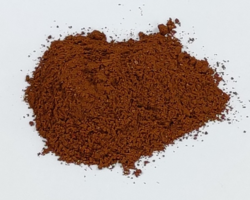Co2+[N≡C−S−]2 | |
 | |
| Identifiers | |
|---|---|
| |
3D model (JSmol) | |
| ChemSpider | |
| ECHA InfoCard | 100.019.234 |
| EC Number |
|
PubChem CID | |
| UNII | |
CompTox Dashboard (EPA) | |
| |
| |
| Properties | |
| C2CoN2S2 | |
| Molar mass | 175.098 g/mol |
| Density | 2.484 g/cm3 |
| +11,090·10−6 cm3/mol | |
| Hazards | |
| GHS labelling: | |
  | |
| Warning | |
| H302, H312, H332, H410 | |
| P261, P264, P270, P271, P273, P280, P301+P312, P302+P352, P304+P312, P304+P340, P312, P322, P330, P363, P391, P501 | |
| Safety data sheet (SDS) | External MSDS |
| Related compounds | |
Other anions | Cobalt(II) cyanate |
Except where otherwise noted, data are given for materials in their standard state (at 25 °C [77 °F], 100 kPa). | |
Cobalt(II) thiocyanate is an inorganic compound with the formula Co(SCN)2. [1] The anhydrous compound is a coordination polymer with a layered structure. The trihydrate, Co(SCN)2(H2O)3, is a isothiocyanate complex used in the cobalt thiocyanate test (or Scott test) for detecting cocaine.
